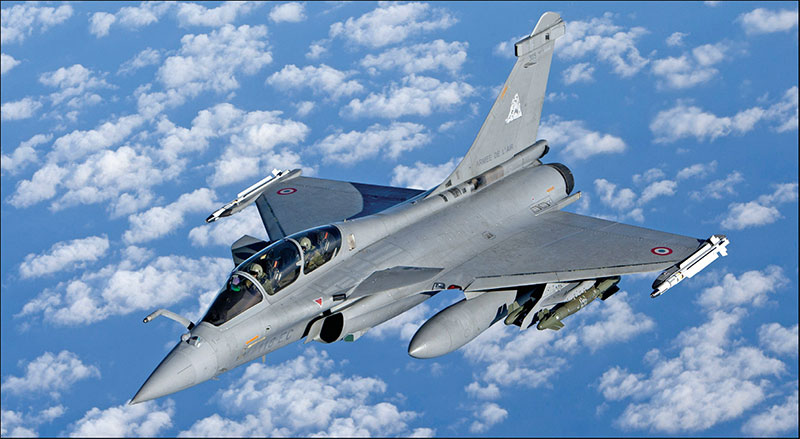Mind Over Matter | The Rafale Riddle
 Maj. Gen. Mrinal Suman (retd)
Maj. Gen. Mrinal Suman (retd)
Having proved its prowess in many operations, Dassault’s Rafale has come to be universally recognised as one of the most potent fighter aircraft in the world. No wonder that the Indian Air Force (IAF) has been coveting it for long.
It all started with the issuance of a Request for Proposals (RFP) in August 2007 for the procurement of 126 fighters — 18 to be bought in fully built-up condition while the balance quantity of 108 was to be manufactured in India by the Hindustan Aeronautics Limited (HAL) under transfer of technology. Six manufacturers submitted their proposals. After extensive trials, two platforms were found technically acceptable and, finally, Rafale emerged winner due to its lower life-cycle cost and the announcement was made on 31 January 2012.
IAF was excited at the prospect of early delivery of Rafale. For long, critical shortages had been a cause of serious concern. Ideally, IAF should have fighter strength of 45 squadrons; with the minimum inescapable requirement being 39.5 squadrons. With dwindling assets and the aging fleet, IAF had been demanding urgent acquisitions. However, even after prolonged negotiations, the deal could not be concluded. By 2014, talks had reached a total impasse with no signs of possible breakthrough. In addition to escalating cost (from USD 10-12 billion to USD 25-30 billion), two other critical issues proved highly cantankerous. One, Dassault declined to stand guarantee for the 108 fighters to be built by HAL. According to the media reports, Dassault felt that HAL was too mired in the quagmire of mediocrity to be able to produce ultra-modern fighters. Two, differences emerged regarding the interpretation of scope and depth of technology to be transferred. It became clear by early 2015 that the deal was dead for all purposes. The then defence minister said so publicly.

IAF was a worried force and made its disquiet known to the government in no uncertain terms. The government understood the criticality of the situation and started exploring various options for interim relief. While on a tour of France in April 2015, Prime Minister Narendra Modi disclosed India’s intent to place an order for 36 ‘ready-to-fly’ Rafale fighter jets to meet the immediate requirements. It was to be a government to government deal. The aircraft and associated systems and weapons were to be delivered on the same configuration as had been earlier tested and approved by IAF. The deliveries were to be made in a time-frame compatible with the operational requirement of the IAF. The order for 36 Rafale aircraft was a desperate measure to boost the IAF’s diminishing strength. The IAF heaved a sigh of relief. After prolonged negotiations, the deal was concluded in September 2016.
Unfortunately, the Rafale deal has got embroiled in unnecessary controversies. Aspersions are being cast on the sanctity of the process followed. Questions are being raised about the reasonableness of cost. Doubts are being expressed about the criteria adopted by Dassault to select Indian Offset Partners (IOPs). Preconceived notions, misconceptions and blinkered outlook have vitiated the environment to such an extent that the facts have got shrouded in misgivings and truth has become a casualty. Worst, the sceptics have branded the deal to be a scam, raising questions about the procedure followed, cost of acquisition and selection of offset partners.
Procedural Aspects
As the IAF was pressing hard for new fighters, the only viable course open to the government was to abort the MMRCA proposal formally and start anew with the issuance of a fresh RFP. That would have meant a delay of 10 years. Hence, MoD’s order for 36 Rafale aircraft was an emergent measure. For such acquisitions, government to government deal is by far the ideal route to follow — a certain degree of assurance is inbuilt in the process and quality-cum-performance parameters are guaranteed. Most importantly, everything is above board with no midd
Subscribe To Force
Fuel Fearless Journalism with Your Yearly Subscription
SUBSCRIBE NOW
We don’t tell you how to do your job…
But we put the environment in which you do your job in perspective, so that when you step out you do so with the complete picture.








